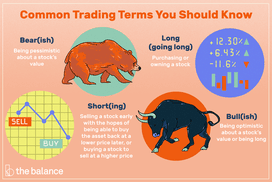
Technical charts can be confusing for beginners. You can use technical indicators like relative strength indexes, moving averages, and RSI to help you understand trends, fractals or momentum. You can also find other indicators such as trendlines and moving average convergence divergence. These indicators are useful tools for traders. Brokers can also offer access to various technical charts. Brokers may also offer educational materials and tools that will help you to become more familiarized with different indicators.
Candlestick charts
Candlestick charts in technical charts are a popular method to visualize price action. They display the highest and lowest trading prices for an asset in a specified time frame. These charts also show the length and color of the candlesticks. Candlesticks are often red or green in colour and indicate bullish, or bearish, price movements. The candlestick's wick is often attached to its body.

Point and figure charts
Different from other types, point and figure charts are not the same as technical charts. They have no time scale so they don't change with the passing of time. They advance only when intermediate trends change. Point and figure charts are useful for short-term and intermediate-term trading. Point and figure analysts will often compare multiple charts from the same instrument to find the one that performs best. There are important differences between Point and figure charts and other types.
Pennant charts
To understand how to read technical charts with penny charts, you must first learn about the candlesticks. These shapes tell a story about stock prices and act as key levels to support and resist. Bearish candles are indicative of price declines, while bullish candles are indicative of price rises. Doji candles indicate indecision and can give you different types of information. No matter what candle you choose or the type of candlestick that you use, the candlestick's body will provide key levels of support as well as resistance.
Moving average convergence divergence
The Moving Average Convergence Divergence(MACD) indicator assists traders in determining their entry and exit points to maximize profits while minimising losses. It measures the convergence of two moving-averages using different time periods as well as historical closing prices. When the MACD line crosses zero, it is generally interpreted as a buy signal. If the central line crosses under zero, it's a sell signal.

Stochastic oscillator
A stochastic oscillator plots the current price against the range of prices during a specified time. This can be used to identify overbought or oversold levels of prices and trade accordingly. You must first understand the principles and workings of the stochastic oscillator chart. The stochastic oscillator displays the current price as an indicator of the range. This changes as the price moves from one extreme to the other. A buy signal is when the price rises above a given level. Conversely, a decrease in price indicates that it is time to sell.
FAQ
What do I need to know about finance before I invest?
No, you don’t have to be an expert in order to make informed decisions about your finances.
All you need is commonsense.
That said, here are some basic tips that will help you avoid mistakes when you invest your hard-earned cash.
First, be cautious about how much money you borrow.
Don't fall into debt simply because you think you could make money.
Also, try to understand the risks involved in certain investments.
These include inflation and taxes.
Finally, never let emotions cloud your judgment.
Remember, investing isn't gambling. To be successful in this endeavor, one must have discipline and skills.
These guidelines are important to follow.
What investment type has the highest return?
The answer is not what you think. It all depends on the risk you are willing and able to take. If you are willing to take a 10% annual risk and invest $1000 now, you will have $1100 by the end of one year. Instead, you could invest $100,000 today and expect a 20% annual return, which is extremely risky. You would then have $200,000 in five years.
In general, the higher the return, the more risk is involved.
The safest investment is to make low-risk investments such CDs or bank accounts.
However, it will probably result in lower returns.
High-risk investments, on the other hand can yield large gains.
A stock portfolio could yield a 100 percent return if all of your savings are invested in it. But it could also mean losing everything if stocks crash.
Which one is better?
It all depends on your goals.
If you are planning to retire in the next 30 years, and you need to start saving for retirement, it is a smart idea to begin saving now to make sure you don't run short.
It might be more sensible to invest in high-risk assets if you want to build wealth slowly over time.
Remember: Riskier investments usually mean greater potential rewards.
However, there is no guarantee you will be able achieve these rewards.
How do I know if I'm ready to retire?
It is important to consider how old you want your retirement.
Is there a specific age you'd like to reach?
Or would you rather enjoy life until you drop?
Once you have established a target date, calculate how much money it will take to make your life comfortable.
The next step is to figure out how much income your retirement will require.
Finally, calculate how much time you have until you run out.
What if I lose my investment?
Yes, you can lose all. There is no guarantee that you will succeed. There are however ways to minimize the chance of losing.
One way is diversifying your portfolio. Diversification spreads risk between different assets.
Stop losses is another option. Stop Losses are a way to get rid of shares before they fall. This lowers your market exposure.
Margin trading is another option. Margin trading allows you to borrow money from a bank or broker to purchase more stock than you have. This increases your odds of making a profit.
What types of investments are there?
There are many types of investments today.
Some of the most popular ones include:
-
Stocks - A company's shares that are traded publicly on a stock market.
-
Bonds are a loan between two parties secured against future earnings.
-
Real estate is property owned by another person than the owner.
-
Options - A contract gives the buyer the option but not the obligation, to buy shares at a fixed price for a specific period of time.
-
Commodities: Raw materials such oil, gold, and silver.
-
Precious Metals - Gold and silver, platinum, and Palladium.
-
Foreign currencies - Currencies that are not the U.S. Dollar
-
Cash - Money which is deposited at banks.
-
Treasury bills are short-term government debt.
-
Commercial paper - Debt issued to businesses.
-
Mortgages – Loans provided by financial institutions to individuals.
-
Mutual Funds are investment vehicles that pool money of investors and then divide it among various securities.
-
ETFs: Exchange-traded fund - These funds are similar to mutual money, but ETFs don’t have sales commissions.
-
Index funds - An investment vehicle that tracks the performance in a specific market sector or group.
-
Leverage - The ability to borrow money to amplify returns.
-
Exchange Traded Funds (ETFs) - Exchange-traded funds are a type of mutual fund that trades on an exchange just like any other security.
These funds offer diversification advantages which is the best thing about them.
Diversification means that you can invest in multiple assets, instead of just one.
This helps you to protect your investment from loss.
Statistics
- As a general rule of thumb, you want to aim to invest a total of 10% to 15% of your income each year for retirement — your employer match counts toward that goal. (nerdwallet.com)
- Some traders typically risk 2-5% of their capital based on any particular trade. (investopedia.com)
- Over time, the index has returned about 10 percent annually. (bankrate.com)
- 0.25% management fee $0 $500 Free career counseling plus loan discounts with a qualifying deposit Up to 1 year of free management with a qualifying deposit Get a $50 customer bonus when you fund your first taxable Investment Account (nerdwallet.com)
External Links
How To
How do you start investing?
Investing means putting money into something you believe in and want to see grow. It is about having confidence and belief in yourself.
There are many ways to invest in your business and career - but you have to decide how much risk you're willing to take. Some people like to put everything they've got into one big venture; others prefer to spread their bets across several small investments.
Here are some tips for those who don't know where they should start:
-
Do your homework. Find out as much as possible about the market you want to enter and what competitors are already offering.
-
You need to be familiar with your product or service. It should be clear what the product does, who it benefits, and why it is needed. You should be familiar with the competition if you are trying to target a new niche.
-
Be realistic. Be realistic about your finances before you make any major financial decisions. You'll never regret taking action if you can afford to fail. Be sure to feel satisfied with the end result.
-
Don't just think about the future. Look at your past successes and failures. Ask yourself whether there were any lessons learned and what you could do better next time.
-
Have fun. Investing shouldn’t be stressful. Start slow and increase your investment gradually. You can learn from your mistakes by keeping track of your earnings. Keep in mind that hard work and perseverance are key to success.